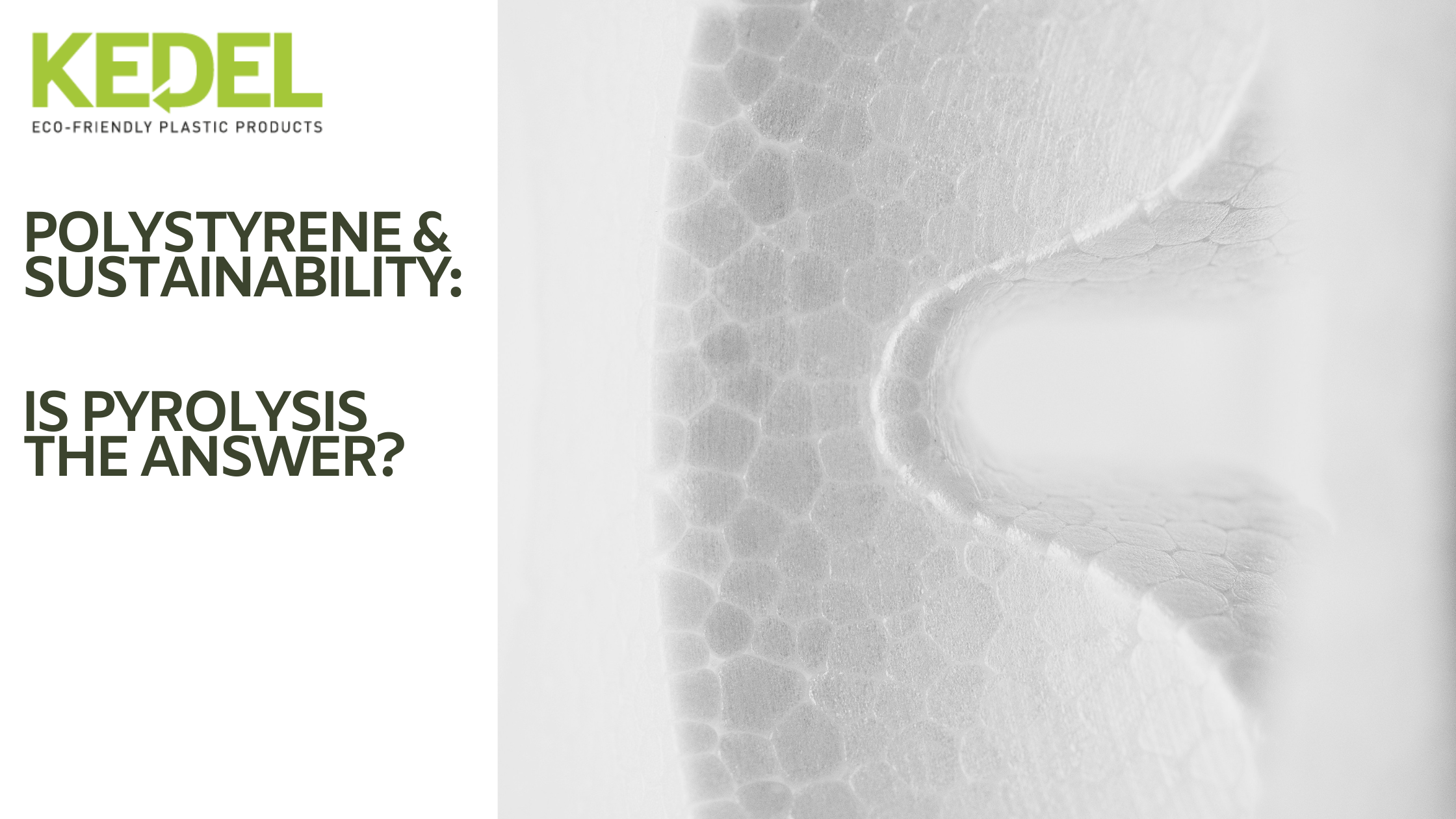 Add My Company
Add My Company

At Kedel, we’re passionate about sustainability and the innovative use of recycled plastic. Polystyrene, often recognized for its utility in packaging, presents a complex narrative—one that balances remarkable practicality with significant environmental concerns. A recent study has shown that there are ways to sustainably recycle this widely used material - reducing our reliance on ‘virgin’ polystyrene. Let’s take a closer look.
The Benefits of Polystyrene in Packaging
Polystyrene is a versatile plastic widely used in consumer packaging due to its many beneficial properties:
- Lightweight Nature: One of polystyrene's standout attributes is its light weight, which reduces shipping costs and fuel consumption during transportation. This makes it highly desirable for businesses aiming to streamline logistics.
- Excellent Insulation Properties: Polystyrene’s thermal insulation capabilities make it ideal for packaging temperature-sensitive products. Whether it's hot foods, cold beverages, or delicate electronics, polystyrene ensures that goods maintain their integrity throughout their journey.
- Cost-Effective: Polystyrene is relatively inexpensive to produce from a manufacturing standpoint. This economic advantage translates to lower costs for businesses, which can be especially beneficial for small enterprises looking to optimize their packaging solutions.
- Customisability: The material’s flexibility allows for the creation of tailor-made packaging solutions that perfectly fit and protect diverse products. This flexibility helps minimise product damage and loss.
The Environmental Drawbacks of Polystyrene
While polystyrene holds clear advantages, its environmental impact cannot be overlooked:
- Non-Biodegradable: One of the most significant environmental issues with polystyrene is that it is non-biodegradable. Once discarded, it can persist in the environment for hundreds of years, contributing to landfills and posing risks to wildlife.
- Challenging to Recycle: Polystyrene recycling is more complex than that of other plastics. It is generally not accepted by curbside collection programs due to contamination issues and the cost-effectiveness of recycling processes. Specialized facilities are required, which are scarce and often not economically viable for many municipalities.
- Environmental Pollution: Improper disposal of polystyrene leads to widespread pollution, particularly in marine environments. It breaks down into microplastics that are ingested by marine life, leading to devastating ecological consequences and entering the food chain, which poses health risks to humans as well.
- Resource-Intensive Production: The production of polystyrene relies heavily on fossil fuels, leading to significant carbon emissions. This dependence on non-renewable resources further compounds its environmental impact.
Is Pyrolysis the Answer? New Study Shows Promising Results
Polystyrene is widely used in packaging due to its many benefits, but it also contributes to plastic pollution in our environment. To tackle this issue, effective recycling methods are needed to reduce the use of new raw materials and support eco-friendly practices. One such method, called pyrolysis, is showing promising results.
Researchers from Worcester Polytechnic Institute in Massachusetts and the University of Bath in the UK have developed a pyrolysis process. This involves heating polystyrene to over 450°C in an environment without oxygen, preventing combustion. The material breaks down into its basic building blocks, known as monomers, which can then be purified and turned back into new polystyrene. Impressively, producing 1 kg of this new material uses less energy than running a microwave for 30 minutes.
The detailed process, described in the Chemical Engineering Journal, uses a pyrolysis reactor, a heat exchanger, and distillation columns. These components work together to separate the polystyrene into high-quality styrene, which can be reused to make fresh polystyrene. Other by-products from the process can be repurposed in various ways, adding to the efficiency.
From 1 kg of recycled polystyrene, about 600 grams of pure styrene monomers are produced, ready for use in new manufacturing. This not only lowers the reliance on fossil fuels but also results in a 60% yield, reducing the costs and environmental impact of carbon emissions compared to other recycling methods.
Bernardo Castro-Dominguez from the University of Bath comments,“Chemical recycling techniques are a major focus within chemical engineering right now, and cost- and energy-efficient ways to breakdown plastics to their primary building blocks such as polystyrene are urgently needed. Less than 5% of polystyrene is recycled at present — our work shows that as much as 60% of all polystyrene used today could be replaced by chemically recycled styrene.”
This advancement highlights the potential of chemical recycling to make a significant impact on reducing plastic waste and promoting sustainability. It’s a step towards a cleaner, greener future.
At Kedel, we believe in striking a balance—leveraging the strengths of polystyrene where appropriate while advocating for and developing more sustainable packaging solutions. Our commitment to a greener future drives us to continuously innovate, ensuring sustainable practices become the industry standard!
To learn more about Kedel’s recycled plastic materials, visit our extensive product range. From building materials to landscaping and even outdoor furniture, our innovative recycled plastic collection is an eco-friendly switch worth making.
For more information on Polystyrene & Sustainability: Is Pyrolysis the Answer? talk to Kedel Ltd

